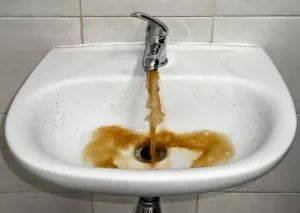
Chicago has a lead problem that may rival the contamination in Flint, Michigan, according to The Guardian. The publication analyzed years of Chicago tap water tests (conducted for residents between 2016 – 2021) and discovered that 1 in 20 of the tests performed by the city showed lead levels at or above U.S. government limits. Out of 24,000 tests, 1000 had lead levels exceeding the federal standard of 15 ppb in drinking water. More than 30% of the tests had lead levels exceeding the FDA standard of 5 ppb lead for bottled water. This is extremely concerning because lead exposure is linked to a host of health effects.
Lead is a potent neurotoxin that can cause irreversible damage, which is why many health experts say there is no safe level of lead. The American Academy of Pediatricians recommends lead levels under 1ppb to protect children whose brains are particularly susceptible to the metal. Even low levels of lead have been linked to lower IQ levels, behavioral disorders, and poor reading and math performance in children. In adults, low levels of lead can cause kidney problems and high blood pressure.
The size of the problem is much greater than Chicago’s current water testing shows, however, because most homes with lead service lines in the city have not even been tested yet. In fact, Chicago has an estimated 400,000 lead pipes supplying water to city homes, more than any other city in the country. This is partly because Chicago inexplicably kept a law– requiring lead pipes be used to connect homes to the city’s water system–on the books until 1986, years after most large cities had banned them.
If you extrapolate the city’s water testing data to include all the homes with lead service lines, Chicago could potentially have 16,000 homes with lead levels above federal drinking water standards and 120,000 homes with lead levels above bottled water standards. This is unacceptable.
Not surprisingly race and income are factors in this crisis. Nine of the top ten zip codes with the largest percentage of high test results were working-class neighborhoods with a majority of Black and Hispanic residents, including Bronzeville, Garfield Park, South Chicago, and the East Side.
Of course, city spokespeople claim that Chicago takes its drinking water quality seriously. However, that assertion appears grossly inaccurate, when you realize that the city never even analyzed the tap water test results, much less made an analysis available to the public. And so far, Chicago has only replaced about 180 of the city’s 400,000 lead pipes since September 2020. The city can’t even get a program off the ground to offer free pipe replacements to homes that serve as daycares. By contrast, Newark, New Jersey started a program in 2019 that has replaced 23,186 lead pipes in that city. If Newark can get that done, so can Chicago.
Unfortunately, the elected officials in Chicago don’t seem to have the political will to fix this problem.
Instead, the City of Chicago’s department of water management offers excuses: complaining that the city’s tap water should not be held to the same standard as bottled water, claiming that state codes pose a big challenge to replacing the pipes, or blaming the high lead test results on residents who may have done the testing incorrectly.
Moreover, Mayor Lori Lightfoot requested and received permission from the state for Chicago to have FIFTY YEARS to replace all the lead service lines. This is not the action of a mayor who “takes drinking water quality seriously”.
We call upon the mayor to treat the city’s lead contamination as the serious health threat it is and to use every resource at the city’s disposal to replace the dangerous pipes as soon as possible.
The people of Chicago—especially the children– cannot wait 50 years for safe drinking water.
Read the full Guardian article here.
The Collins Law Firm is a top-rated environmental law firm representing individuals and communities who have been injured by toxic contamination.

"*" indicates required fields